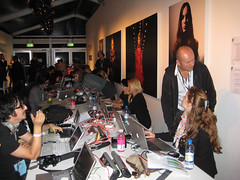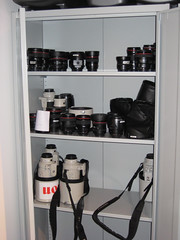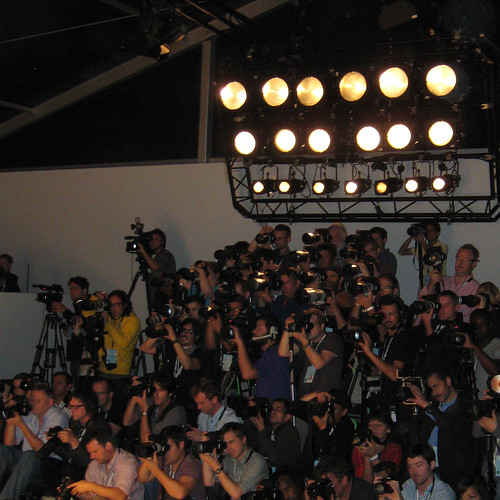This content is 12 years old. I don't routinely update old blog posts as they are only intended to represent a view at a particular point in time. Please be warned that the information here may be out of date.
Last year I wrote a post about my “hardware lineup” – i.e. the tech I use almost every day so I thought I should really do the same for 2012. Much of it’s still the same but there are some changes – it will be interesting to take a look in retrospect next year and see how my plans for 2012 have worked out. So, here’s the tech that I expect my life will revolve around this year.
Car: Volkswagen Tiguan 2.0 TDI Sport
 My company car is due for replacement in the spring and I’ve ordered a Volkswagen Tiguan to drive for the next 3 years. I really like the Audi A4 Avant that I drive at the moment but it’s recently had a lot of money spent on it (new clutch and major service costing over £2,500 – thankfully not paid by me) and I’m not sure that a three-year-old car with 60,000 miles on the clock is worth the money the lease company wants for me to take it on…
My company car is due for replacement in the spring and I’ve ordered a Volkswagen Tiguan to drive for the next 3 years. I really like the Audi A4 Avant that I drive at the moment but it’s recently had a lot of money spent on it (new clutch and major service costing over £2,500 – thankfully not paid by me) and I’m not sure that a three-year-old car with 60,000 miles on the clock is worth the money the lease company wants for me to take it on…
Due to price increases, another A4 with the same spec will cost me quite a lot more each month and, whilst the Tiguan is a little smaller, it’s also more practical (I looked at the Q3 too – but it’s “fugly”, overpriced and there is limited engine choice at the moment). With my growing family the addition of a towbar should allow me to take 4 bikes around on a carrier without scratching the car too.
Verdict who knows – it’s not been delivered yet!
Phones: Nokia Lumia 800 and Apple iPhone 3GS
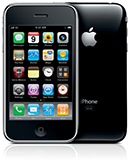
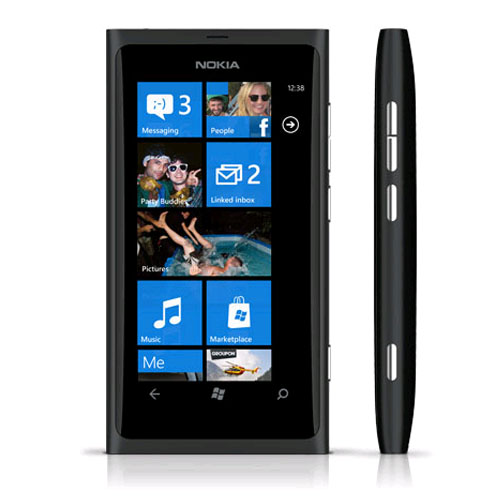 I recently joined the 1.5% and jumped into the Windows Phone market. I like it – and want the platform to succeed – but really feel Microsoft has a long way to go. Thankfully I still have an iPhone 3GS provided by my employer (and my iPad) to fall back on when apps are not available or when the Lumia is just too infuriating…
I recently joined the 1.5% and jumped into the Windows Phone market. I like it – and want the platform to succeed – but really feel Microsoft has a long way to go. Thankfully I still have an iPhone 3GS provided by my employer (and my iPad) to fall back on when apps are not available or when the Lumia is just too infuriating…
It was a risk buying the Nokia Lumia but the hardware is lovely, the software will improve, and it was a major investment so, realistically, it’s likely to remain with me for the next 2 years! Meanwhile, I’m still hoping to get myself an iPhone 4 or 4S to replace the 3GS but the chances are best described as slim.
(Lumia) Verdict 7/10. Hold.
(iPhone) Verdict 3/10. Not mine to sell!
Tablet: Apple iPad 3G 64GB
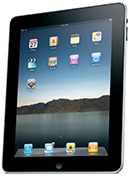 No change here – the iPad is my media tablet of choice and no-one else even comes close. I may be tempted by an Amazon Fire or the new (rumoured) baby iPad but at the time of writing this device is still great for occasional surfing, a bit of TV catchup, and social media on the move. It’s also great for the kids to play games and catch up on vital episodes of childrens’ television programmes that they missed (using BBC iPlayer)!
No change here – the iPad is my media tablet of choice and no-one else even comes close. I may be tempted by an Amazon Fire or the new (rumoured) baby iPad but at the time of writing this device is still great for occasional surfing, a bit of TV catchup, and social media on the move. It’s also great for the kids to play games and catch up on vital episodes of childrens’ television programmes that they missed (using BBC iPlayer)!
Verdict 8/10. Hold.
Everyday PC: Fujitsu Lifebook S7220 (Intel Core 2 Duo P8400 2.2GHz, 4GB RAM, 250GB hard disk)
 I’m still hoping for a BYOC scheme at work, but this PC is my main computing device. I’d love a ThinkPad, but the Lifebook is a perfectly capable, solid, well-built notebook PC, although I frequently find myself running out of memory with the number of tabs I have open in a typical browsing session!
I’m still hoping for a BYOC scheme at work, but this PC is my main computing device. I’d love a ThinkPad, but the Lifebook is a perfectly capable, solid, well-built notebook PC, although I frequently find myself running out of memory with the number of tabs I have open in a typical browsing session!
When it comes up for replacement, I’ll see if I can blag something smaller (really need to be a grade more senior for that) and reduce the weight of my work-bag…
Verdict 6/10. Holding out for a BYOC scheme at work.
Netbook: Lenovo S10e (Intel Atom N270 1.6GHz, 2GB RAM, 160GB hard disk)
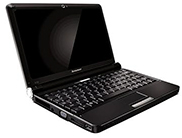 Netbook, schmetbook. I hardly used this in 2011. I did install Ubuntu 11.04 on it and have a couple of blog posts to write before I use it to play with Windows 8. I bought the S10e for Windows 7 testing 3 years ago so it owes me nothing but the netbook form factor has been usurped by tablets and low-cost notebooks. My kids have one too but even they are frustrated by the small screen and tend to use my wife’s notebook PC instead
Netbook, schmetbook. I hardly used this in 2011. I did install Ubuntu 11.04 on it and have a couple of blog posts to write before I use it to play with Windows 8. I bought the S10e for Windows 7 testing 3 years ago so it owes me nothing but the netbook form factor has been usurped by tablets and low-cost notebooks. My kids have one too but even they are frustrated by the small screen and tend to use my wife’s notebook PC instead
Verdict 2/10. Not worth selling, so keep for tech projects.
Digital Cameras: Nikon D700 and Coolpix P7100
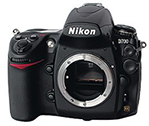
 I still love my DSLR and the D700 will be with me for a while yet. Indeed, it’s more likely that I would buy some new lenses and a flashgun before I replace my camera body.
I still love my DSLR and the D700 will be with me for a while yet. Indeed, it’s more likely that I would buy some new lenses and a flashgun before I replace my camera body.
The P7100 joined me this year as a device to carry everywhere and it’s been pretty good, offering entry-level DSLR levels of control in a small package, although it’s not as responsive as I’d like.
(D700) Verdict 9/10. Hold.
(P7100) Verdict 7/10. Hold.
Photography PC: Apple MacBook MB062LL/B (Intel Core 2 Duo T7500 2.2GHz, 4GB RAM, 750GB hard disk)
 This MacBook needs to last a while longer before I can justify its replacement but I did upgrade the hard disk in 2011 and it may get another upgrade this year. 4GB of RAM is starting to feel a bit light for big Photoshop jobs but new Macs are expensive. I’d better get saving for something new in 2013…
This MacBook needs to last a while longer before I can justify its replacement but I did upgrade the hard disk in 2011 and it may get another upgrade this year. 4GB of RAM is starting to feel a bit light for big Photoshop jobs but new Macs are expensive. I’d better get saving for something new in 2013…
Verdict 5/10. Hold.
Media: Apple Mac Mini MA206LL/A (Intel Core Duo 1.66GHz, 2GB RAM, 120GB hard disk)
(+ iPad, Lumia 800, iPhone 3GS, various iPods, Altec Lansing iM7 iPod speakers)
 No change here since last year – although both disks in one of my NASs failed and I need to re-rip my CDs for my music library (iTunes had already done a good job of mangling it). I still haven’t bought the music keyboard (maybe this year) but it’s lasting well as my multimedia PC for the office with Spotify, iPlayer, etc.
No change here since last year – although both disks in one of my NASs failed and I need to re-rip my CDs for my music library (iTunes had already done a good job of mangling it). I still haven’t bought the music keyboard (maybe this year) but it’s lasting well as my multimedia PC for the office with Spotify, iPlayer, etc.
It may not be the most powerful of my PCs, but it’s more than up to this kind of work and it takes up almost no space at all.
Verdict 6/10. Hold.
Gaming: Microsoft Xbox 360 S 250GB with Kinect Sensor
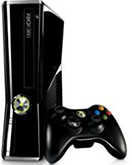 I don’t play this as much as I should to make full use of it (although I am enjoying my latest purchase: Lego Pirates of the Caribbean). Hopefully the next few months will finally see iPlayer land on the Xbox at which point it will become a really useful media centre for the living room (it works with my aging SD TV).
I don’t play this as much as I should to make full use of it (although I am enjoying my latest purchase: Lego Pirates of the Caribbean). Hopefully the next few months will finally see iPlayer land on the Xbox at which point it will become a really useful media centre for the living room (it works with my aging SD TV).
Verdict 9/10. Hold.
Servers and Storage: Atom-based PC, 2x Netgear ReadyNAS Duo
My Dell PowerEdge 840 has been retired to save energy (although it could still be wheeled out for any virtual machine workloads to test infrastructure scenarios) and, as I already mentioned, one of my ReadyNASs has suffered a multiple disk failure (waiting for me to sort out some warranty replacement disks) but, once recovered, these machines will remain as the mainstay of my computing infrastructure. Cloud storage for my photos is still too expensive so I’m likely to add another NAS at a family member’s house to maintain an off-site backup.
Verdict 6/10. Hold.
These have taken my fancy and I’m seriously considering them all in 2012. Only time will tell what I buy (and when) but I’m sure you’ll hear about my exploits on the blog!
 I was amazed at how close to the action it’s possible to get with the Tour of Britain. Back in the mid-90s I went to watch some stages of the Network Q RAC Rally and could literally stand on the side of a forest track half way up a mountain as cars shot past at very high speed but I imagine these days “health and safety” have taken over and it must be a lot more controlled. The last kilometre of the cycling has barriers for crowd control but with two loops of Caerphilly Mountain inside towards the end of the race the crowds were up there, rather than in town. I later saw from the television pictures that the mountain spectators were all over the road, right up to the riders, shouting encouragement, just like on a stage of the Tour de France or Vuelta a España – very un-British and fantastic to see.
I was amazed at how close to the action it’s possible to get with the Tour of Britain. Back in the mid-90s I went to watch some stages of the Network Q RAC Rally and could literally stand on the side of a forest track half way up a mountain as cars shot past at very high speed but I imagine these days “health and safety” have taken over and it must be a lot more controlled. The last kilometre of the cycling has barriers for crowd control but with two loops of Caerphilly Mountain inside towards the end of the race the crowds were up there, rather than in town. I later saw from the television pictures that the mountain spectators were all over the road, right up to the riders, shouting encouragement, just like on a stage of the Tour de France or Vuelta a España – very un-British and fantastic to see.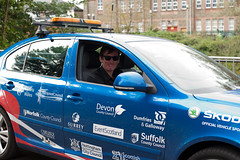 After the presentations, I could (almost) get to the Team Sky bus (the “Death Star”), could definitely get close to the other teams, and even managed to say hello to Matt Stephens (Race Controller and TV Presenter). Unlike some sports, it seems that the stars of professional road race cycling are still (reasonably) accessible for the fans.
After the presentations, I could (almost) get to the Team Sky bus (the “Death Star”), could definitely get close to the other teams, and even managed to say hello to Matt Stephens (Race Controller and TV Presenter). Unlike some sports, it seems that the stars of professional road race cycling are still (reasonably) accessible for the fans.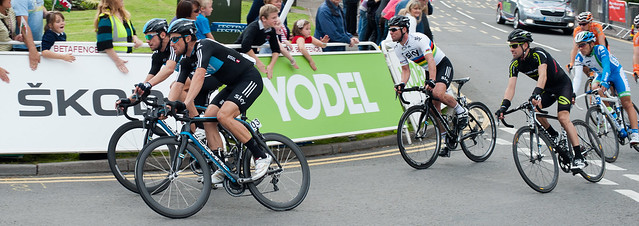


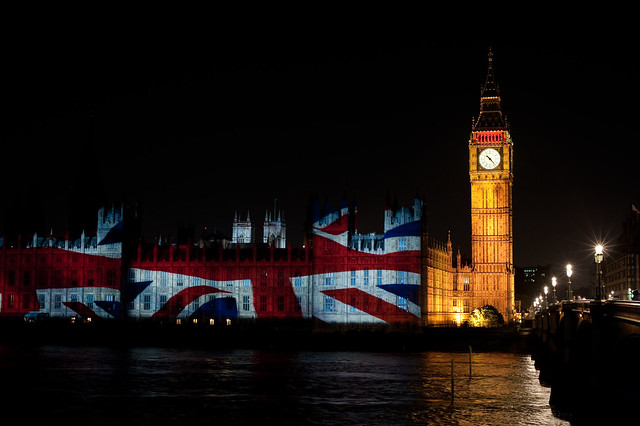


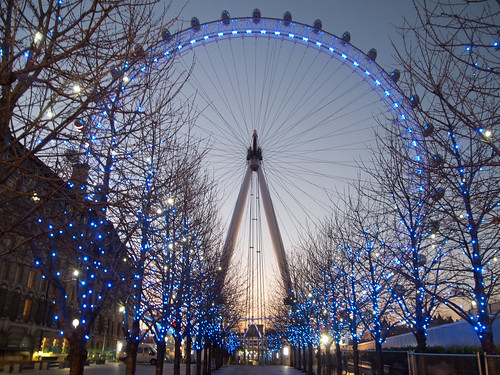
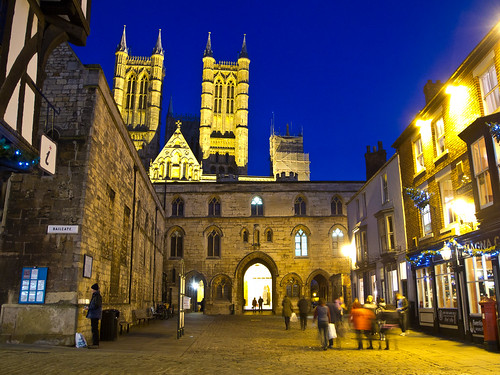

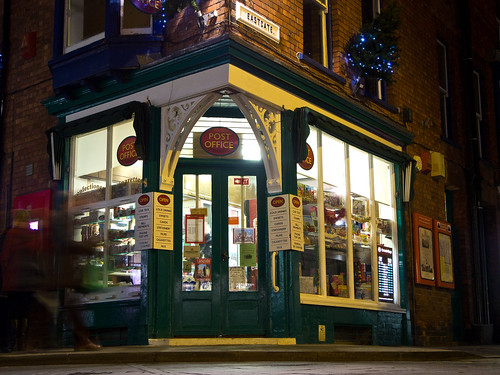



 My company car is due for replacement in the spring and
My company car is due for replacement in the spring and 

 No change here – the iPad is my media tablet of choice and no-one else even comes close. I may be tempted by an Amazon Fire or the new (rumoured) baby iPad but at the time of writing this device is still great for occasional surfing, a bit of TV catchup, and social media on the move. It’s also great for the kids to play games and catch up on vital episodes of childrens’ television programmes that they missed (using BBC iPlayer)!
No change here – the iPad is my media tablet of choice and no-one else even comes close. I may be tempted by an Amazon Fire or the new (rumoured) baby iPad but at the time of writing this device is still great for occasional surfing, a bit of TV catchup, and social media on the move. It’s also great for the kids to play games and catch up on vital episodes of childrens’ television programmes that they missed (using BBC iPlayer)! I’m still hoping for a BYOC scheme at work, but this PC is my main computing device. I’d love a ThinkPad, but the Lifebook is a perfectly capable, solid, well-built notebook PC, although I frequently find myself running out of memory with the number of tabs I have open in a typical browsing session!
I’m still hoping for a BYOC scheme at work, but this PC is my main computing device. I’d love a ThinkPad, but the Lifebook is a perfectly capable, solid, well-built notebook PC, although I frequently find myself running out of memory with the number of tabs I have open in a typical browsing session! Netbook, schmetbook. I hardly used this in 2011. I did install Ubuntu 11.04 on it and have a couple of blog posts to write before I use it to play with Windows 8. I bought the S10e for Windows 7 testing 3 years ago so it owes me nothing but the netbook form factor has been usurped by tablets and low-cost notebooks. My kids have one too but even they are frustrated by the small screen and tend to use my wife’s notebook PC instead
Netbook, schmetbook. I hardly used this in 2011. I did install Ubuntu 11.04 on it and have a couple of blog posts to write before I use it to play with Windows 8. I bought the S10e for Windows 7 testing 3 years ago so it owes me nothing but the netbook form factor has been usurped by tablets and low-cost notebooks. My kids have one too but even they are frustrated by the small screen and tend to use my wife’s notebook PC instead
 I still love my DSLR and the D700 will be with me for a while yet. Indeed, it’s more likely that I would buy some new lenses and a flashgun before I replace my camera body.
I still love my DSLR and the D700 will be with me for a while yet. Indeed, it’s more likely that I would buy some new lenses and a flashgun before I replace my camera body. This MacBook needs to last a while longer before I can justify its replacement but I did upgrade the hard disk in 2011 and it may get another upgrade this year. 4GB of RAM is starting to feel a bit light for big Photoshop jobs but new Macs are expensive. I’d better get saving for something new in 2013…
This MacBook needs to last a while longer before I can justify its replacement but I did upgrade the hard disk in 2011 and it may get another upgrade this year. 4GB of RAM is starting to feel a bit light for big Photoshop jobs but new Macs are expensive. I’d better get saving for something new in 2013… No change here since last year – although both disks in one of my NASs failed and I need to re-rip my CDs for my music library (iTunes had already done a good job of mangling it). I still haven’t bought the music keyboard (maybe this year) but it’s lasting well as my multimedia PC for the office with Spotify, iPlayer, etc.
No change here since last year – although both disks in one of my NASs failed and I need to re-rip my CDs for my music library (iTunes had already done a good job of mangling it). I still haven’t bought the music keyboard (maybe this year) but it’s lasting well as my multimedia PC for the office with Spotify, iPlayer, etc. I don’t play this as much as I should to make full use of it (although I am enjoying my latest purchase: Lego Pirates of the Caribbean). Hopefully the next few months will finally see iPlayer land on the Xbox at which point it will become a really useful media centre for the living room (it works with my aging SD TV).
I don’t play this as much as I should to make full use of it (although I am enjoying my latest purchase: Lego Pirates of the Caribbean). Hopefully the next few months will finally see iPlayer land on the Xbox at which point it will become a really useful media centre for the living room (it works with my aging SD TV). A couple of nights ago, I went along to listen to four times British Press Photographer of the Year,
A couple of nights ago, I went along to listen to four times British Press Photographer of the Year, 

